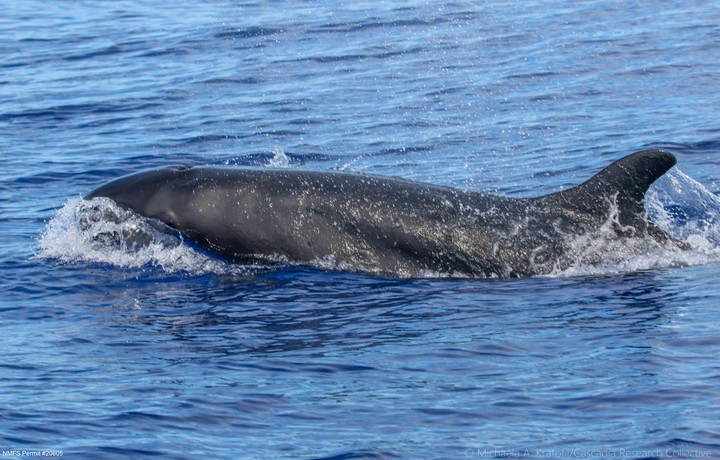Breaching the line: Persistent organic pollutant concentrations exceeding thresholds in Hawaiian false killer whales

Abstract
False killer whales (Pseudorca crassidens) are long-lived, slow to mature, apex predators, and therefore susceptible to bioaccumulation of persistent organic pollutants (POPs). Hawaiian waters are home to three distinct populations/stocks: pelagic, Northwestern Hawaiian Islands (NWHI), and main Hawaiian Islands (MHI). The MHI stock comprises at least four discrete social clusters. Following a precipitous decline over recent decades, the MHI population was listed as “endangered” under the Endangered Species Act in 2012. This study assesses the risk of POP exposure to these populations by examining pollutant concentrations and patterns based on life history parameters (i.e., sex, age class, reproductive status) and among MHI social clusters. Blubber biopsies (n=55) were analyzed for contaminants such as PCBs, DDTs, and PBDEs. For all populations, most whales contained total PCB concentrations that exceed the suggested threshold for associated deleterious health effects in marine mammals. There were no significant differences in POP levels between juveniles and sub-adults. Juveniles and sub-adults were found to have higher concentrations of some contaminants than those measured in adults. Consequently, these individuals may be at greater risk to negative health effects (e.g., thyroid disruption, immunocompetence) as they undergo critical physiological development. For most contaminants, parous adult females had significantly lower concentrations than nulliparous females and adult males, likely a result of maternal offloading. We will investigate the influence of age class, sex, and reproductive status on POP concentrations in individuals, while controlling for social cluster and population assignment, using linear mixed effects models. Our results will provide invaluable insight into the ongoing risk these contaminants pose to the MHI population’s viability, as well as consideration of risk for the NWHI and pelagic populations. In addition, we highlight the importance of examining variance in POP levels among social groups within the same population in order to better assess population-level threats.